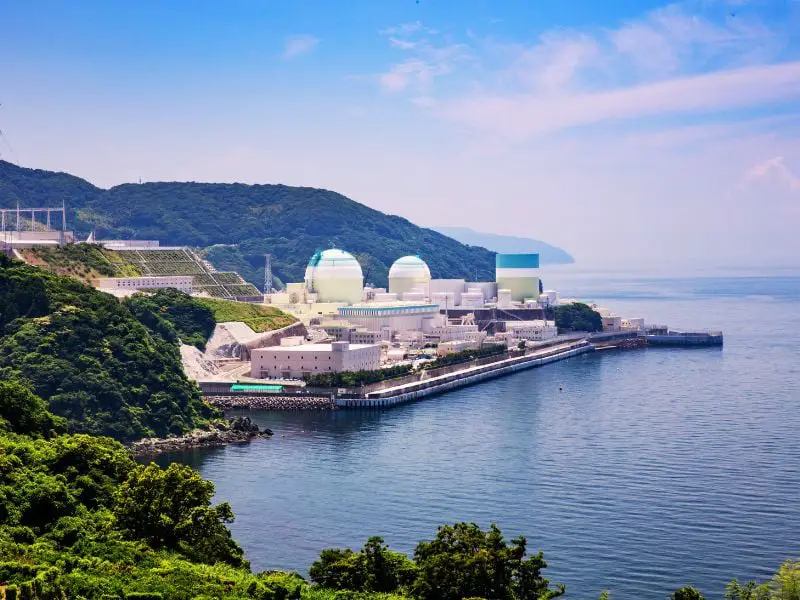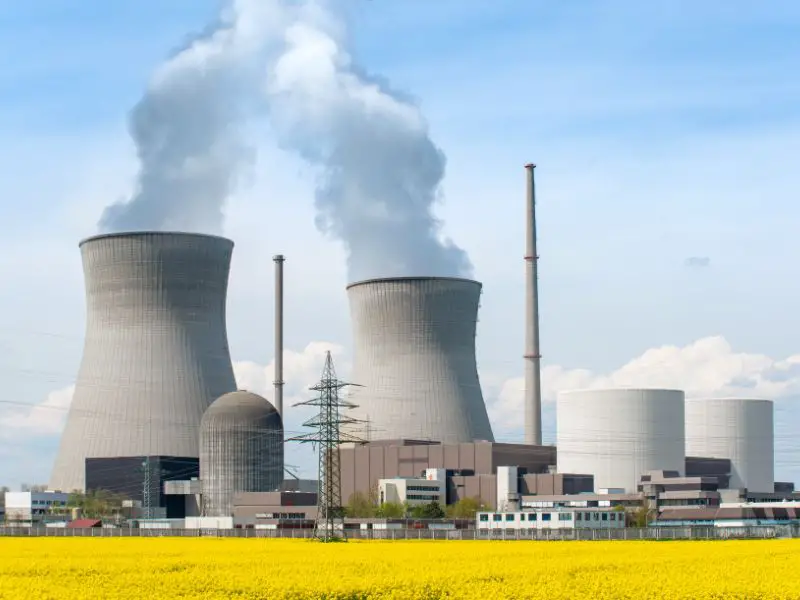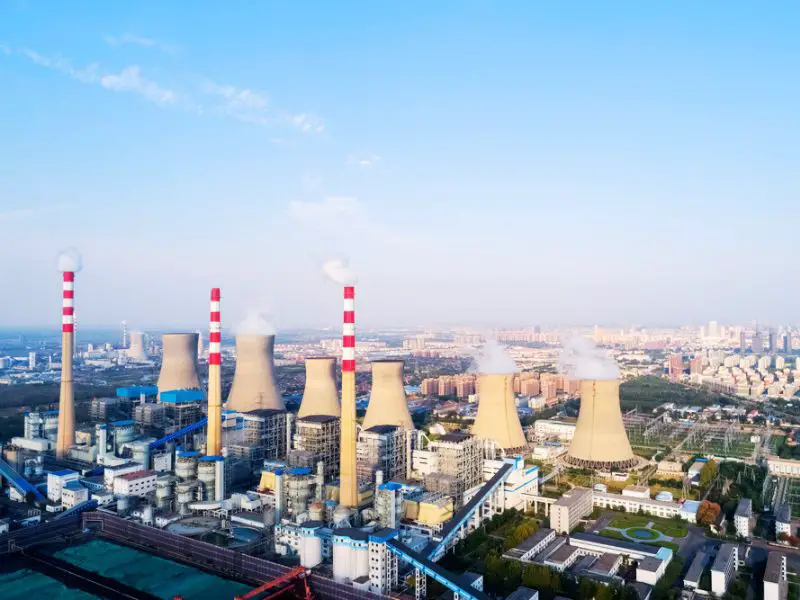Nuclear power plants are impressive and fascinating pieces of technology. Not only do they generate vast amounts of energy with minimal environmental disruption, but their sheer scale is genuinely remarkable.
This article will look at today’s ten largest nuclear power plants, exploring their power output capabilities and how they operate.
Spotlight on the World’s Largest Nuclear Power Plants
Nuclear energy is not just another buzzword in the realm of sustainable power; it is an embodiment of human innovation and commitment to harnessing cleaner sources of energy. Among the pioneers of this advancement stand the largest nuclear power plants of the world, each a testimony to the strides we’ve made in electricity generation. Delving deeper into these behemoths offers insights into their profound impacts on our global energy landscape.
The Titans of Nuclear Generation
The term “largest nuclear power plants” doesn’t merely refer to their physical size but encompasses their massive production capabilities, technological advancements, and contributions to the global electricity grid. Among the list of the largest nuclear power plants, the Zaporizhzhia nuclear power plant in Ukraine stands out not just in size but also in its efficient electricity generation. Simultaneously, the United States boasts of the Palo Verde facility, which is among the largest nuclear power plants and is an epitome of nuclear excellence.
South Korea, an emerging giant in the world of nuclear energy, has prominently marked its name with plants like the Hanul nuclear power plant and the Kori nuclear power plant. These are among the largest nuclear power plants in Asia. With the support and innovation from Korea Hydro, these facilities are a testament to the nation’s robust vision for a nuclear-powered future.
Meanwhile, in Canada, among the largest nuclear power plants, Bruce Power and its Bruce Nuclear Generating Station echo the same commitment, proving that modern nuclear power plants can strike a balance between capacity, efficiency, and safety.
Diving into the Heart: The Role of Reactors
Every nuclear power plant, including some of the largest nuclear power plants, thrives on the bedrock of its nuclear reactor. These reactors are where controlled nuclear reactions transpire, producing massive amounts of power. With the invention of water reactors, reactors in the largest nuclear power plants have become far more efficient and safer.
“Nuclear power plants are, next to coal, our cheapest means of generating electricity.”
– James Lovelock
But, of course, the reactor is a part of a more extensive system. The entire nuclear plant, from its waste management strategies to stringent nuclear safety protocols, determines its efficacy in generating electricity, especially in the largest nuclear power plants.
The Powerhouses of Electricity Generation
The crux of the discussion about nuclear energy pivots on electricity generation. As per reports from the Energy Information Administration, the largest nuclear power plants are not just landmarks but critical components in the world’s electricity supply chain. Their capacity often surpasses traditional power sources, such as natural gas, making them indispensable in meeting the globe’s burgeoning energy demands.
The Broader Landscape of Nuclear Energy
While much focus is on the world’s largest nuclear power plants, one mustn’t overlook the smaller but vital plants scattered worldwide. These facilities might not match the enormity of Palo Verde or Bruce Power, but they play a pivotal role in their regional energy landscapes.
Nuclear energy, in essence, transcends being merely a power source. It symbolizes the global stride towards a cleaner, sustainable energy future. Nuclear power plants, whether monumental in capacity or smaller yet essential, collectively further this vision. With ongoing research, technological enhancements, and a persistent emphasis on nuclear safety, nuclear power remains a linchpin in the planet’s sustainable energy narrative.
“Nuclear power is a way of using the atom that is at least as peaceful as the weather, and far more useful.”
– Lewis Strauss
As we inch closer to a green, sustainable future, the largest nuclear power plants and their lesser-known counterparts collectively pave the way. They serve as tangible evidence that the atom, when tapped rightly, can not only light up cities but also catalyze our shift to sustainable energy paradigms.
Largest Nuclear Power Plants in the World
1. Kashiwazaki-Kariwa Nuclear Power Plant, Japan
TEPCO’s Kashiwazaki-Kariwa facility in Japan is the most extensive nuclear power plant in the world, with a net ability of 7,965MW. It has seven boiling water reactors and an installed capacity of 8,212MW. The first five have a capability of 1,100 MW, respectively, and the other two are capable of 1,356MW.
The first unit operated in 1985, but the government needed to halt the operation because of the Fukushima catastrophe in 2012. TEPCO is making transformations to comply with new safety codes established by Japan’s Nuclear Regulatory Authority, and all reactors should be running again in the near future.

2. Bruce Nuclear Generating Station, Canada
The Bruce Nuclear Plant stands as one of the largest nuclear power plants globally, ranking as the second largest. Operated by Bruce Power and owned by Ontario Power Generation, it boasts a capacity of 6,430 MW.
This prominent facility within the list of the largest nuclear power plants has eight pressurized heavy water reactors, each with a distinct capacity ranging from 786MW to 891MW. The last reactor, adding to the prowess of the world’s largest nuclear power plants, went live in 1987.
Bruce 1, contributing to the plant’s status among the largest nuclear power plants, was shut down in 1997 but made a comeback in 2012. Similarly, Bruce 2, which had paused operations in 1995, restarted in 2012.
In a move to further cement its position among the largest nuclear power plants, the plant’s capacity was augmented by 22MW to 6,430MW in 2019 following a planned outage in Bruce 3.
3. Hanul Nuclear Power Plant, South Korea
The Ulchin Nuclear Power Plant, now known as Hanul Nuclear Power Plant, is a giant nuking plant in South Korea. It’s got a huge installed capacity of 6,189 MW and a design capacity of 5,908 MW, making it one of the largest in the world. The first phase of the Hanul plant was finished in 2005, with six pressurized water reactors (PWR).
In the second phase, they’re adding two more reactors, Shin Hanul-1, and Shin Hanul-2, which will bring the plant’s total capacity up to 8,608 MW once completed in late 2019. These units will also bump up the gross capacity to 8,989 MW.

4. Hanbit Nuclear Power Plant, South Korea
The Hanbit Nuclear Power Plant in South Korea, formerly the Yeonggwang Nuclear Power Plant, stands as one of the world’s largest nuclear power plants and is the fourth-largest nuclear power station globally.
With a net capacity of 5,899MW and a gross capacity of 6,164MW, it’s operated by Korea Hydro & Nuclear Power (KHNP) and holds a prominent position among the largest nuclear power plants worldwide.
The plant features six pressurized water reactor (PWR) units commissioned from 1986 to 2002. However, within the roster of these reactors at one of the largest nuclear power plants, unit 3, with a capacity of 1,000MW, faced challenges.
It had to shut down in November 2012 due to cracks in its control rod guide tube. After rigorous repair work spanning eight months, the unit was successfully fixed and resumed operations in June 2013.
5. Zaporizhzhia Nuclear Power Plant, Ukraine
The Zaporizhzhia Nuke Plant in Enerhodar, Ukraine, is the largest nuclear power station in Europe and ranks 5th in the world. It has a net capacity of 5,700MW and a gross capacity of 6,000MW. It’s got six VVER-1000 PWR units fired up between 1984 and 1995 and is owned and run by Energoatom, Ukraine’s state-owned nuclear energy company. The plant produces more than a fifth of the country’s total electricity.
6. Gravelines Nuclear Power Plant, France
The Gravelines Nuclear Power Plant in Northern France packs a punch as the 6th largest nuke plant in the world, with a net capacity of 5,460MW and gross capacity of 5,706MW. It comprises six PWR units, each with a similar capacity, that came online between 1980 and 1985.
EDF, the French electric utility company, owns and operates this powerhouse. In August 2010, the Gravelines plant made history by producing 1,000 billion kilowatt-hours of electricity, setting a benchmark for nuclear power facilities.
7. Paluel Nuclear Power Plant, France
The Paluel Nuclear Power Plant, near Dieppe in France, stands as a testament to the prowess of nuclear energy. It ranks among the largest nuclear power plants globally, being the seventh largest NPP in terms of its net capacity. Sprawling across 160 hectares right on the English Channel’s coast, this facility is undoubtedly significant in the world of largest nuclear power plants.

Managed and operated by EDF, the plant boasts four PWR reactors with a combined gross capacity of 5,528MW and a net capacity of 5,200MW. Construction of this monumental structure began in 1977. By 1984, the first two units were operational, with the third and fourth units following suit in 1985. In the context of France’s largest nuclear power plants, Paluel secures the second spot, only surpassed by Gravelines.
8. Cattenom Nuclear Power Plant, France
The Cattenom Nuclear Power Plant in France, one of the largest nuclear power plants, has a gross capacity of 5,448MW and a net capacity of 5,200MW. This capacity makes it the same size as the Paluel Nuclear Power Plant, which stands as the seventh largest in the world. EDF owns and operates the Cattenom plant, which ranks among the largest nuclear power plants and consists of four pressurized water reactors, each with a capacity of 1,362MW.
Construction of this massive facility started in 1979, and commercial operations began in 1987. The final reactor was connected in 1991, and the plant utilizes water from the Moselle River for its operations. In 2019, as part of the maintenance of these largest nuclear power plants, they replaced 64,200 tubes in the condensers of the plant.
9. Yangjiang Nuclear Power Plant, China
The Yangjiang nuclear power plant in Guangdong, China, is one of the world’s largest, with a total gross capacity of 5,430MW and five 1086MW PWRs. The sixth reactor is set to be added in 2019. The plant is run by the Yangjiang Nuclear Power Company and owned by China Guangdong Nuclear Power Company (CGNPC), with a current net capacity of 5,000MW, making it the ninth largest NPP globally. The first three reactors started operation in 2014-2016, followed by the fourth and fifth in 2017 and 2018, respectively.

10. Shin Kori Nuclear Power Plant, South Korea
The Shin Kori Nuclear Power Plant near Ulsan, South Korea, is a big player in nuclear energy. With a net capacity of 4,748MW and a gross capacity of 4,974MW, it ranks as the third-largest nuclear power plant in South Korea and the tenth-largest worldwide. Korea Hydro & Nuclear Power (KHNP) owns and operates the power station, which houses four PWR units, including two advanced APR-1400 reactors. And there’s even more growth on the horizon, with two more APR-1400 units under construction since 2017 and 2018.
The first two units, with a net capacity of 996MW each, were put into operation between 2010 and 2012. The third and fourth units followed in 2016 and 2019, respectively.
Author’s Note
To sum up, the leading nuclear power plants in the world are situated in different countries and managed by different firms. These nuclear power plants hold a noteworthy part in satisfying the energy requirements of their nations and enhancing the worldwide energy alliance.
With their vast capacities, these power plants have become models for atomic power production. They remain to be renovated and developed to meet the new safety qualifications and ensure optimal operation. Despite the troubles ushered in by the nuclear industry, these power plants remain a dependable energy source for many countries.
Related: Technological Solutions to Climate Change, Alternative Energy Sources, Environmental Organizations



;?>/smartquizbuilder/includes/images/sqb-registration-img.jpg)



